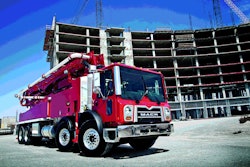
 Forbes’ Rich Karlgaard says the 2018 mid-term elections could be huge for Republicans if the Trump administration grows GDP.
Forbes’ Rich Karlgaard says the 2018 mid-term elections could be huge for Republicans if the Trump administration grows GDP.U.S. economic growth averaging just under 2 percent since the end of the recession has resulted in three trillion dollars’ worth of economic activity that never formed, said Rich Karlgaard, publisher and editor-at-large for Forbes, during his keynote address at the Truckload Carriers Association’s 79th Annual Convention in Nashville, Tenn. “Think about what that would have meant in terms of jobs, tax receipts and infrastructure,” he said. “The average rate of growth going back to 1966 is 3 percent,” he said, adding U.S. gross domestic product should have been growing at 4 percent or better in the last several years.
“We can’t let the press and government talk us into settling for 2 percent growth as new normal,” said Karlgaard, adding the anemic growth was the main reason Donald Trump was elected president with a voter mandate to fix GDP growth rate and nonresidential fixed investments that has been declining. “If there isn’t growth, we are heading from 2 percent GDP to 1 percent or even flat” he said, referring to nonresidential fixed investments.
Karlgaard said the four major economic priorities of the Trump administration – outlined in the Ross-Navarro Plan – are to increase bilateral trade, radically reduce regulation, simplify and reduce taxes and currency valuation. “If Trump doesn’t deliver on meaningful tax reform it will be a market killer,” he said.
If the economic growth does gain significant traction in the next year and a half, Karlgaard said the 2018 midterm elections “could be the mother lode of all elections for Republicans,” as incumbent Democrats will be defending 25 seats, nine of which are considered vulnerable.
“If the economy is back up to 3 percent growth, which it hasn’t been for eight years, and the Trump administration is given credit for improving employment, it will be a huge year,” said Karlgaard. “Republicans could have 56 to 62 seats [in the Senate] which is veto-proof above 60.”
Market disruptors
Citing the decline in newspapers, retail store sales, software and Blackberry as examples of industries or businesses that have been impacted by new entrants to the markets, Karlgaard believes this is only the beginning of a trend toward threats to traditional markets.
“Industries across America and world are seeing that their sustainable advantage is more perishable than it used to be,” said Karlgaard. “The moats and castle walls built around your industry may not be the protectors they were in the previous generation.
“A company can pop up out of nowhere and insert itself between the customer and you and begin reducing all the physical suppliers to commodities and all the margins and profits that goes to the company that owns the customer relationships,” he said, adding the next industries to face disruption by 2030 will include agriculture, energy, manufacturing, transportation, banking & insurance, healthcare and education.
Karlgaard warned the audience not to underestimate the amount of capital flow into autonomous vehicle technology. “Uber now owns Otto, Peloton’s platooning technology is backed by UPS and Volvo,” said Karlgaard. “But I think drivers still will be needed. Pilots will be wanted in a cockpit for some time. When you have human passengers on a plane they will want to see a pilot.”











